Room 3 brewed homemade mānuka tea while learning about the life cycle and the medicinal properties of kānuka and mānuka plants. The prickly mānuka leaves, which grow readily throughout the Lake Taupō region, were washed thoroughly and steeped in boiling water. Some students opted to add a teaspoon of mānuka honey to their tea, while others chose to have theirs without. While the subtle flavour and strong aroma of the tea received mixed reviews, everyone could appreciate its natural healing properties.
The tea tasted quite smooth, and it gave me memories of when my mum made me the best tea.
The smell was strong, but it tasted okay. The tea is anti-inflammatory and it helps with colds.
The tea was sweet and very flavourful. The mānuka is anti-inflammatory and anti-fungal so it helps with illnesses.
To further understand how the many medicinal properties of these plants can be used, Room 3 made mānuka and kānuka balm. Two batches of balm were made by carefully measuring and combining olive oil and beeswax with kānuka and mānuka essential oils. The first batch used a 1:3 ratio of beeswax to oil, and was therefore firmer, while the second batch used a 1:5 ratio which resulted in a slightly softer balm.
We used 300ml of oil for our first batch, so for the next batch we need to use 500ml of oil to have a ratio of 1:5.
Labels for the balm were designed using Canva. Sadie, Samuel, Alma, and Avery designed logos, which were added to their labels. All Room 3 students were able to take home a 65g pottle of mānuka and kānuka balm to keep for themselves, or give to somebody as a gift. Everyone was proud of their handcrafted creations, knowing that they were tapping into centuries of history and healing.
I am going to use my balm for all my bruises and cuts, and I am going to give it to my brother to use as well.
The balm is good for burns, beestings, cuts, and things like blisters.
I designed a label for my balm using Canva. I also made a brochure with information about mānuka and kānuka. When I finished my balm I brought it home so my family could use it.
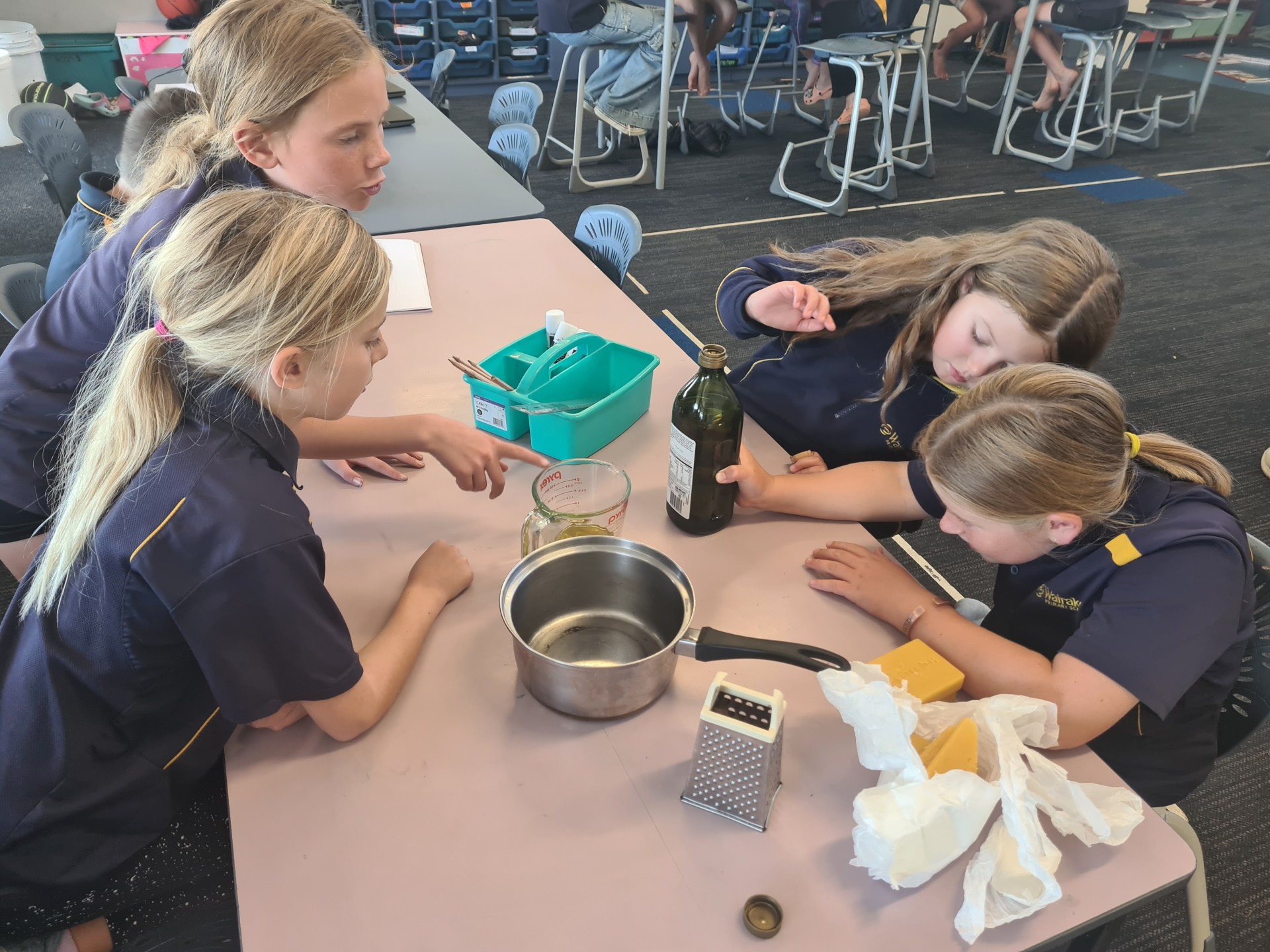
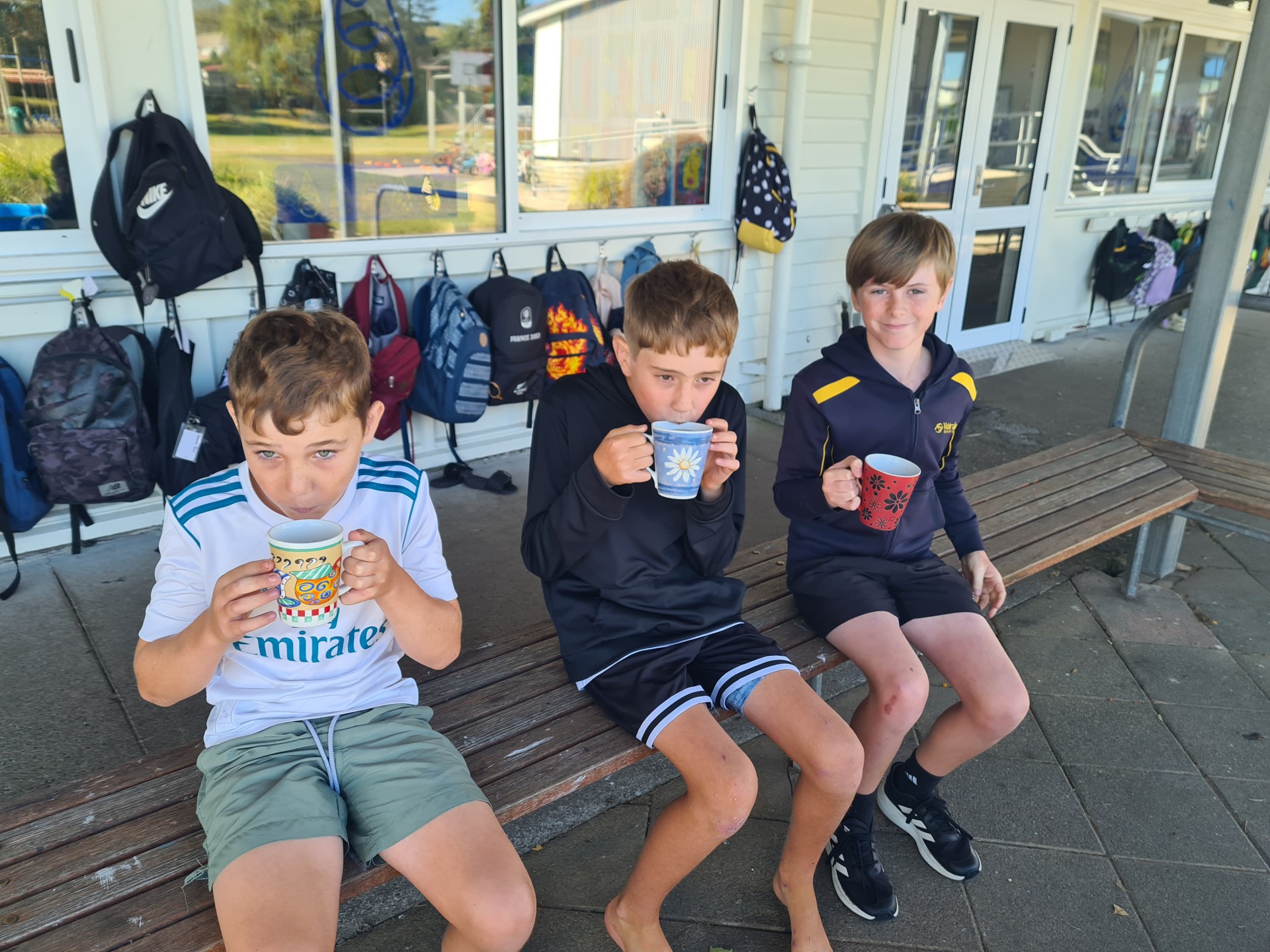
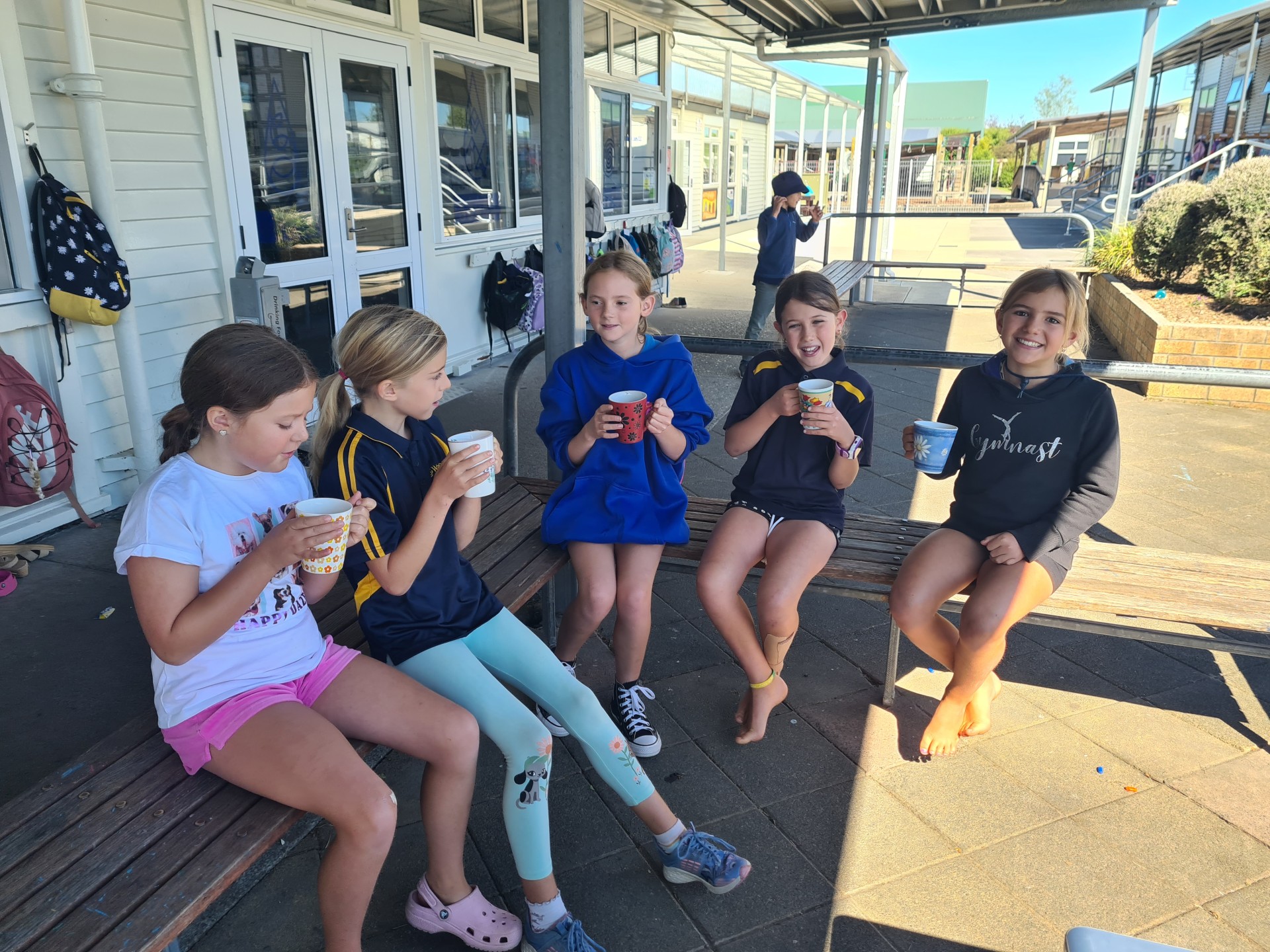
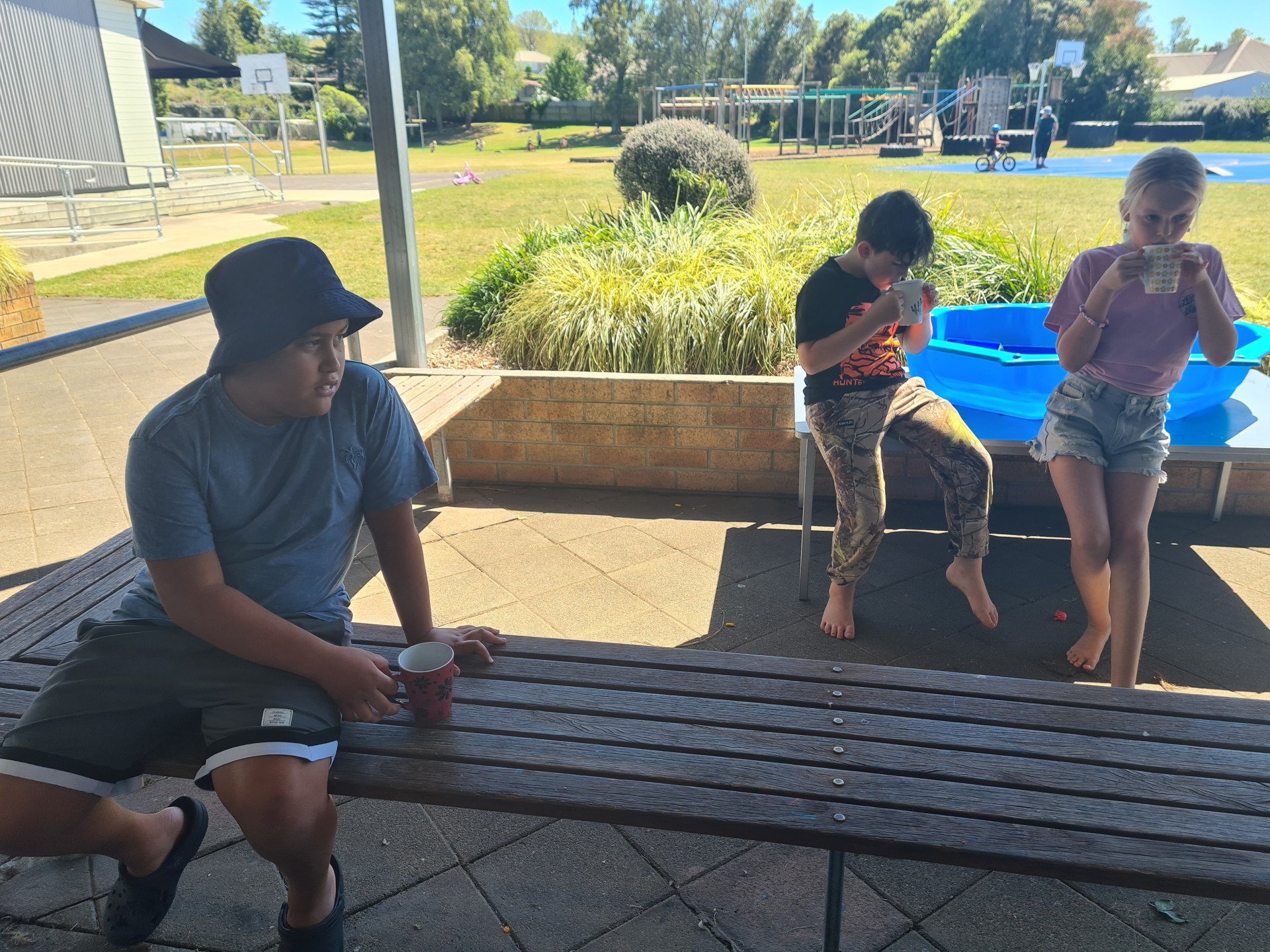
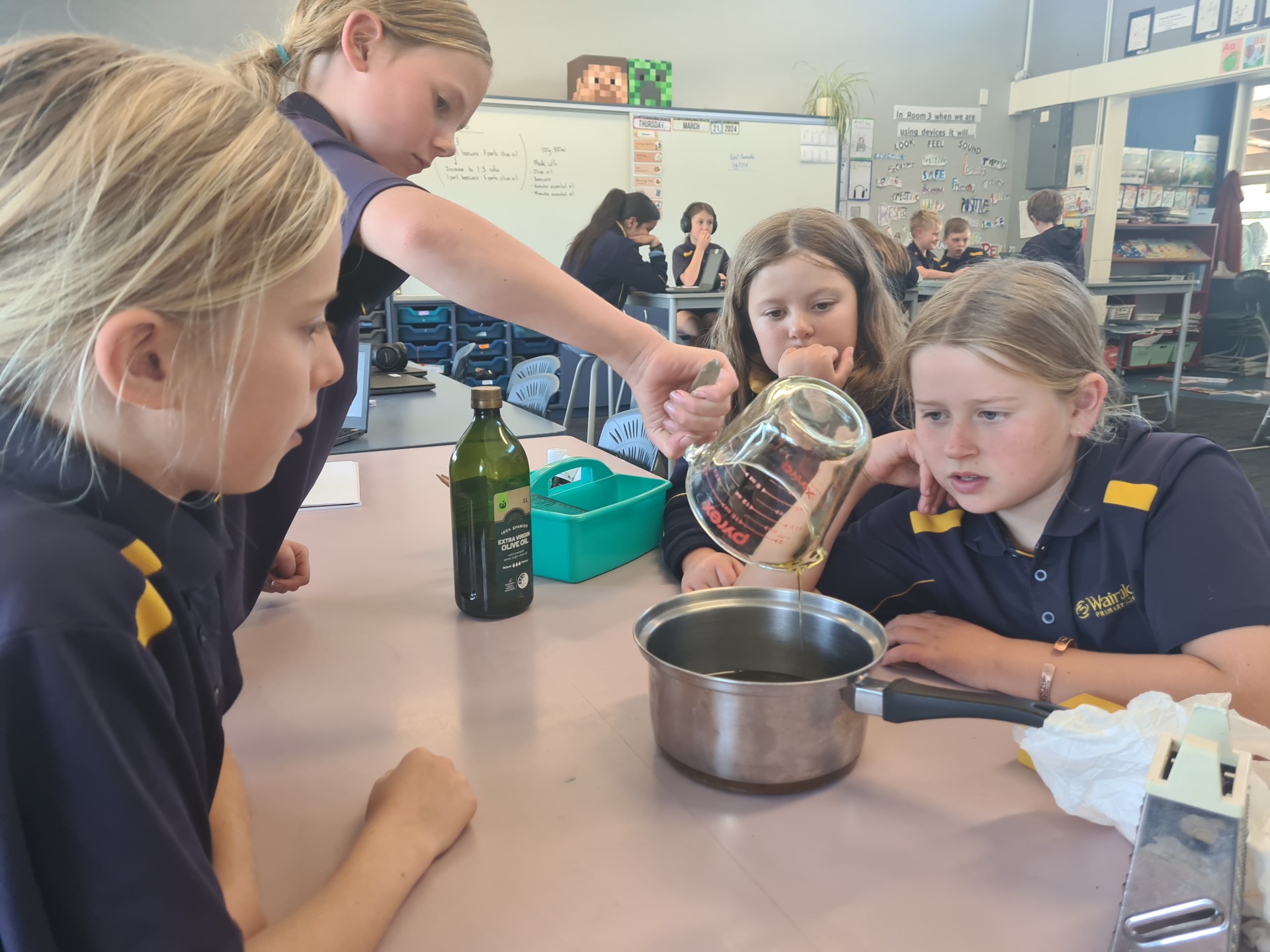
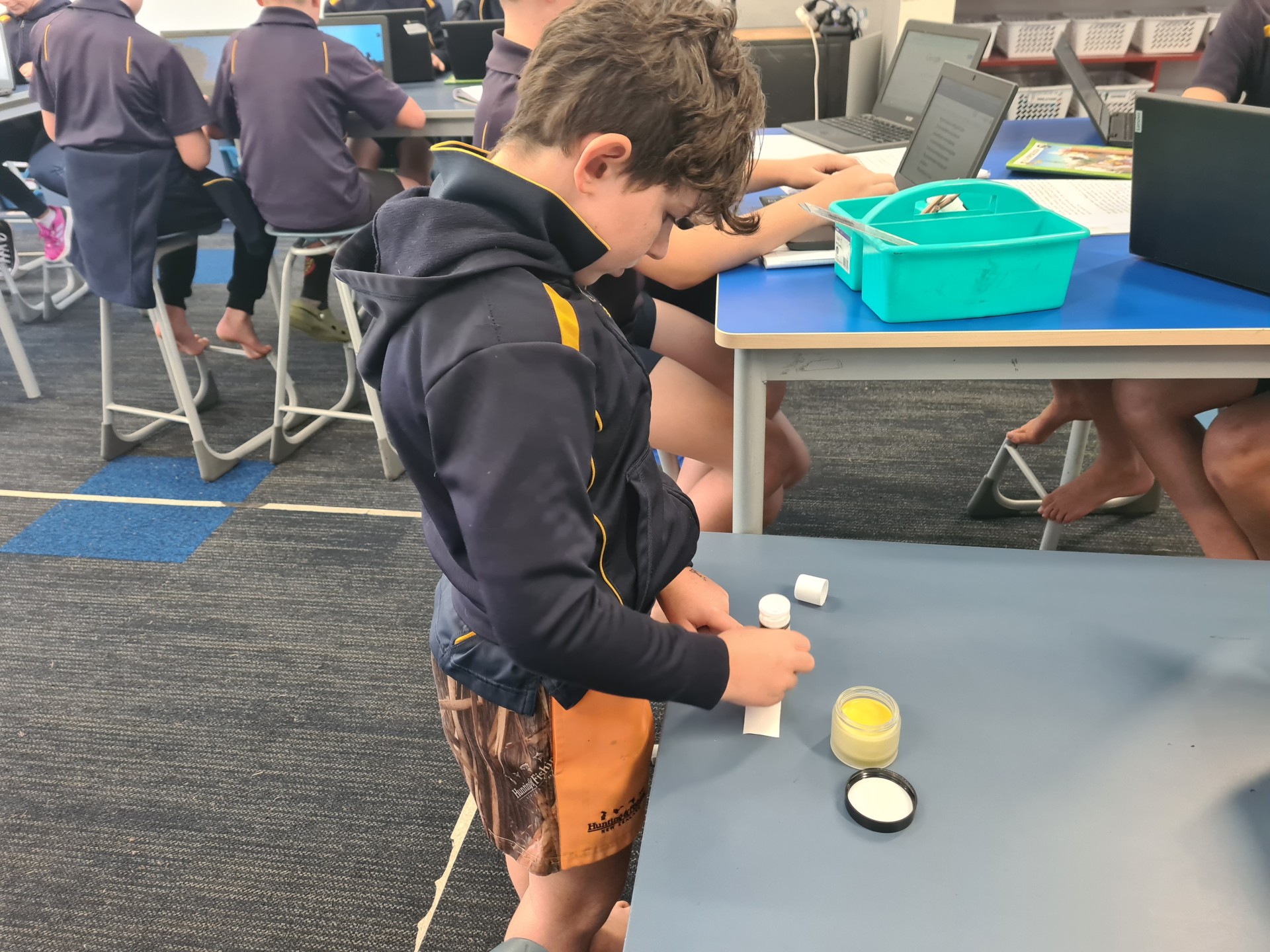
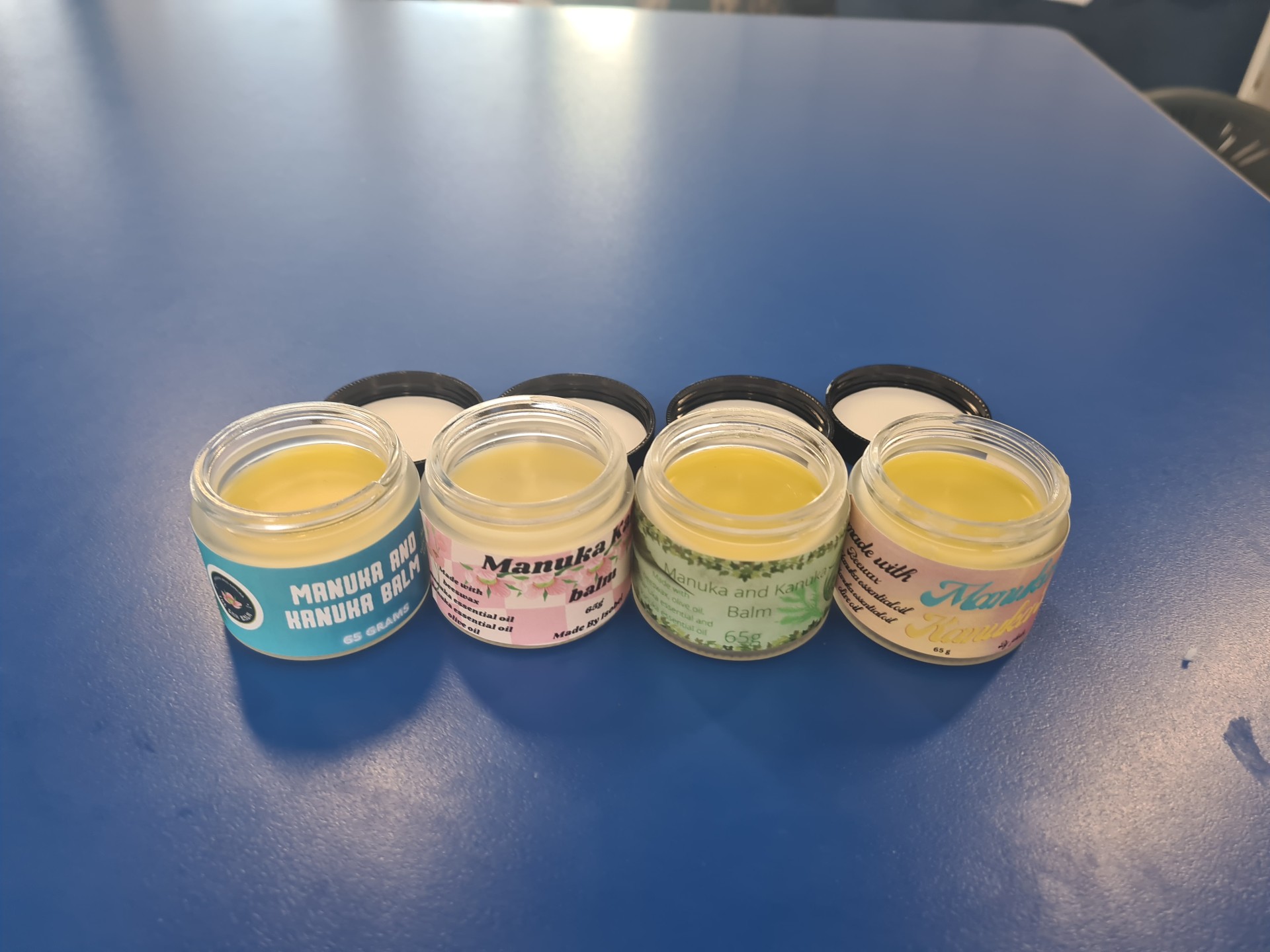
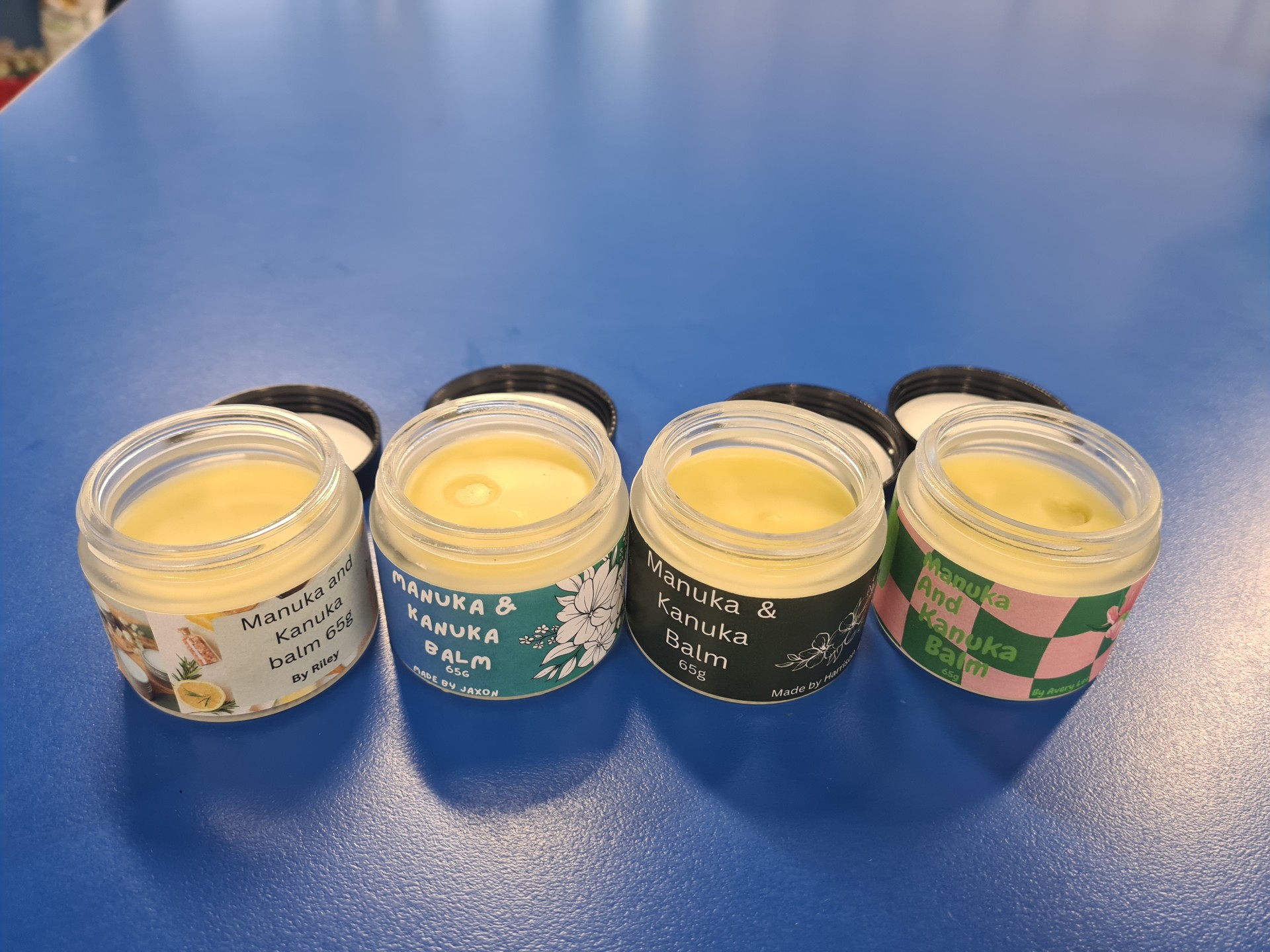
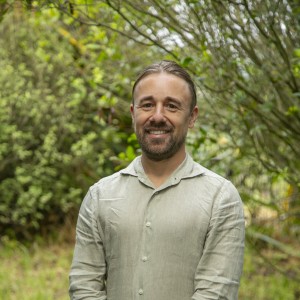

Comments
No one has commented on this post yet.